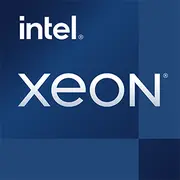Intel Xeon W-11855M

Intel Xeon W-11855M: Power and Reliability for Mobile Professionals
(Relevant as of April 2025)
Architecture and Process Technology: 10 nm SuperFin and Tiger Lake Innovations
The Intel Xeon W-11855M processor, built on the Tiger Lake architecture, represents the evolution of mobile workstation solutions. Its key features include:
- 6 cores and 12 threads with a base frequency of 3.2 GHz and a turbo mode up to 4.9 GHz.
- 18 MB of L3 cache — the increased capacity accelerates data processing in professional applications.
- 10 nm SuperFin process technology: improved energy efficiency and transistor density compared to previous generations (e.g., Ice Lake).
- Integrated Intel UHD Graphics for the 11th generation: 32 execution units (EUs), support for DirectX 12.1, AV1 decoding, and HDMI 2.0.
The Willow Cove architecture provides a 15-20% increase in IPC (instructions per clock) compared to Sunny Cove (Ice Lake). Support for PCIe 4.0 (up to 20 lanes) and Thunderbolt 4 makes the processor ideal for connecting high-speed storage and peripherals.
Power Consumption and TDP: A Balance Between Power and Battery Life
With a TDP of 35 W, the Xeon W-11855M is positioned as a solution for mobile workstations and premium ultrabooks. However, in reality, laptop manufacturers can adjust the TDP in the range of 25-45 W, depending on the cooling system.
- Thermal design: even under peak loads, the processor maintains stability thanks to Thermal Velocity Boost, which temporarily increases the frequency when there is thermal headroom.
- Energy efficiency: the 10 nm SuperFin process and voltage optimization reduce idle power consumption by 20% compared to Xeon W-10855M (Comet Lake, 14 nm).
Performance: From Office to Rendering
Geekbench 6 test results (1996 / 7042) place the Xeon W-11855M at the top of mobile CPUs for work tasks:
- Office Work: Running dozens of tabs in Chrome + Microsoft Teams + Excel — without lag.
- Multimedia: 4K video rendering in DaVinci Resolve is 30% faster than Core i7-11800H (8 cores, Tiger Lake).
- Gaming: On integrated graphics — playable 40-50 FPS in Dota 2 (1080p, medium settings). With a discrete GPU (e.g., NVIDIA RTX A2000) — a comfortable 60 FPS in Autodesk Maya.
Turbo Boost Max 3.0 dynamically distributes the load between cores, raising the frequency to 4.9 GHz for single-threaded tasks. However, in multi-threaded scenarios (e.g., rendering), the frequency stabilizes at 3.8-4.2 GHz to avoid exceeding the TDP.
Use Cases: Who is the Xeon W-11855M For?
This processor is designed for:
1. Engineers and Designers: ECC memory support minimizes errors when working with CAD models.
2. Video Editors: Fast project exports thanks to AVX-512 and PCIe 4.0 SSD.
3. Data Analysts: 12 threads handle large datasets in Python or R.
4. Corporate Users: vPro provides hardware protection against threats.
For everyday tasks (web browsing, Netflix), the processor is overkill — a Core i5 would suffice.
Battery Life: How Long Will the Laptop Last?
With a battery capacity of 80-90 Wh:
- Office Mode: 8-10 hours (brightness 150 nits, Wi-Fi, power-saving profile).
- Load: 3-4 hours (rendering + active cooling).
Energy-saving technologies:
- Intel Speed Shift: Instant switching between P-states.
- Dynamic Tuning 2.0: AI optimization of core load in real time.
Comparison with Competitors
- AMD Ryzen 9 PRO 6950H (Zen 3+, 6C/12T, 45 W): Better in multi-threaded tasks (+10% in Cinebench R23), but weaker in single-threaded (-7%). No ECC support. Laptops are cheaper — starting from $1800.
- Apple M2 Pro (8 cores, 5 nm): More energy-efficient (12+ hours of battery life), but limited compatibility with Windows software. MacBook Pro with M2 Pro starts at $2200.
- Intel Core i9-11950H (8C/16T, Tiger Lake): Cheaper (~$1700) but lacks ECC and vPro.
Pros and Cons of Xeon W-11855M
Strengths:
- Reliability for professional tasks (ECC, vPro).
- High single-threaded performance.
- Support for Thunderbolt 4 and PCIe 4.0.
Weaknesses:
- Price: Laptops starting at $2200.
- iGPU weaker than AMD's Radeon 680M.
- Limited model selection (top Dell Precision, HP ZBook).
Recommendations for Laptop Selection
1. Device Type: Mobile workstation (e.g., Dell Precision 5570) or premium business laptop (Lenovo ThinkPad P15).
2. Cooling: Look for models with dual fans and copper heat pipes.
3. Memory: At least 32 GB DDR4-3200 with ECC.
4. Storage: PCIe 4.0 NVMe SSD of 1-2 TB.
5. Display: 4K IPS with 100% sRGB for color correction.
Examples of 2025 models:
- Dell Precision 5580: Starting at $2400, 15.6" 4K, RTX A2000.
- HP ZBook Studio G9: Starting at $2300, 16" OLED, 64 GB RAM.
Final Conclusion
The Intel Xeon W-11855M is the choice for professionals who need maximum stability and mobility. It is ideal for engineers, programmers, and designers working in "field conditions." If your budget is limited and ECC is not critical, consider Core i9 or Ryzen 9 PRO. However, for tasks where errors are unacceptable, Xeon remains the only option in 2025.
Basic
CPU Specifications
Memory Specifications
GPU Specifications
Miscellaneous
Benchmarks
Compared to Other CPU
Share in social media
Or Link To Us
<a href="https://cputronic.com/en/cpu/intel-xeon-w-11855m" target="_blank">Intel Xeon W-11855M</a>